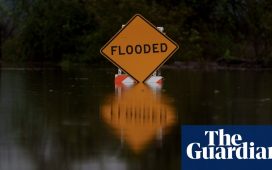In California, Pacific Gas & Electric is upgrading its vast transmission network to avoid a repeat of 2018, when a broken power line sparked the Camp Fire, which killed 85 people and forced the utility into bankruptcy. But PG&E has warned that completing the work could take a decade. In July, the utility told regulators that its equipment may have sparked the Dixie Fire, which has already burned 200,000 acres north of Sacramento.
And adaptation won’t come cheap. A recent report by ICF International, a consulting firm, estimated that utilities faced a $500 billion shortfall in fortifying their systems against known climate risks.
To pay for wildfire protection, Pacific Gas & Electric has asked California regulators to approve a $5.5 billion rate increase for customers from 2023 to 2026, which could raise the average residential bill by roughly $430 per year. Recently, PG&E has floated the idea of burying 10,000 miles of power lines underground, which could cost up to $30 billion more. This comes at a time when the utility is already trying to invest in measures to slash its planet-warming emissions, such as adding more solar power.
In the meantime, many residents are figuring out ways to keep the lights on when the utility can’t.
Maureen Kennedy spent this spring investigating solar and battery power for her home in Inverness, northwest of San Francisco, because of growing anxiety over PG&E’s power shutdowns. Ms. Kennedy lost power for a week in October 2019 before PG&E restored her electricity, only to lose it again for another week, leaving her in the dark for half of the month. Then, last year, homes in her community were evacuated because of fire threats.
“Your utility is so unreliable that you have to think about spending $18,000 for solar and battery backup,” said Ms. Kennedy, a retired real estate broker.
A spokesman for PG&E declined requests to interview utility executives.
Caroline Winn is the chief executive of San Diego Gas & Electric, which pioneered many of the techniques other utilities have adopted for wildfires. Her company has started receiving calls and visits from utility workers from Oregon and places as far away as Australia seeking guidance in fire prevention.
But now Ms. Winn worries about another threat from climate change: sea level rise, which could flood four of the utility’s coastal substations over the next several decades. “Climate is not staying the same,” Ms. Winn said. “It’s getting worse. This is not only a California problem. This is a world problem.”


